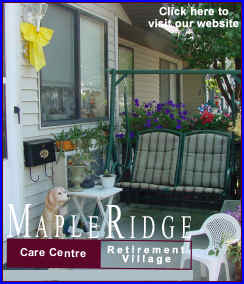|
That's why the Illinois
Emergency Management Agency and the National Weather Service are
once again joining with Gov. Rod R. Blagojevich's Keep Warm Illinois
campaign to remind Illinoisans of the steps they can take to keep
safe this winter when bad weather inevitably strikes. The agencies
are promoting winter weather preparedness during the annual Winter
Storm Preparedness Week, Nov. 12-18. "A mild winter would be
welcomed by most of us in Illinois, but we don't want people to
become complacent and be caught unprepared when bad weather hits,"
said William C. Burke, director of the Illinois Emergency Management
Agency. "Many winter weather-related injuries and deaths could be
prevented if people took a few moments now to prepare their homes
and cars and reacquaint themselves with winter hazards."
According to the National Weather Service, there has not been a
winter in Illinois without a severe winter storm in the past
century. On average, the state experiences five severe winter storms
each year.

Driving in sleet, snow or ice can be particularly treacherous,
and accidents often occur when drivers are caught unaware. "Drivers
in Illinois need to be aware of the forecast for the first snowfall
of the season and then slow down," said Chris Miller, with the
National Weather Service office in Lincoln. "Most injuries and
fatalities attributed to winter weather are a result of auto
accidents. It doesn't take much snow or ice to produce very slippery
conditions."
Before traveling in winter months, check the latest weather
conditions along your travel route and make sure tires, wipers and
lights are in good condition. Start your trip with a full tank of
gas; provide your itinerary to a friend, relative or co-worker; and
if possible, travel during daylight hours on main roads.
While on the road, be prepared to turn back and seek shelter if
conditions become threatening. Keep windows clear of snow and ice,
and adjust speed for road conditions.
If you are stranded, pull as far off the road as possible, set
your hazard lights to flashing and hang or tie a colored cloth,
preferably red, to your antenna, window or door. If you have a
cellular phone, call for help. Stay in your vehicle where rescuers
are most likely to find you. Make sure the exhaust pipe is not
blocked by snow, and then run the engine and heater about 10 minutes
each hour to keep warm.
Now is the time to equip your car with a winter car survival kit
stocked with items that can keep you safe and warm if you should
become stranded alongside a road. A car survival kit should include
the following:
-
Cell phone and
charger
-
First-aid kit
-
Water and
high-calorie, nonperishable food
-
Boots, hats, gloves
and extra clothing to keep dry
-
Blanket
-
Sack of sand or cat
litter
-
Shovel
-
Windshield scraper
and brush
-
Tool kit
-
Tow rope
-
Booster cables
-
Compass and road maps
-
A small can and
waterproof matches to melt snow for drinking water
[to top of second column] |
 A severe winter storm could prevent you from leaving your home
for several days, perhaps living without electricity or heat. A
basic home preparedness kit can help you get through winter storms
and other emergencies throughout the year. Items in the kit should
include the following:
-
Three-day supply of
nonperishable food, including high-energy foods such as dried
fruit and candy
-
Bottled water (one
gallon per family member per day for three days)
-
Battery-operated
radio, NOAA weather radio and extra batteries
-
Flashlight and extra
batteries
-
First-aid kit
-
Extra medications and
special items for babies, the disabled and the elderly
To learn more about winter preparedness, the Illinois Emergency
Management Agency, National Weather Service and the American Red
Cross developed a Winter Storm Preparedness Guide, which is
available by calling 217-785-9888 and at
www.state.il.us/iema. The
guide includes many more tips on how to stay safe in your home and
car, as well as information about winter weather terms, frostbite
and hypothermia.
In addition, the Illinois Department of Public Health offers a
free guide called "Weathering Winter" to help people stay safe and
healthy during the winter. The guide addresses cold weather
preparations, including safety tips for using furnaces, fireplaces
and space heaters; fire safety; weather terms and understanding wind
chill; preparing for severe weather; maintaining your water supply;
winterizing your vehicle; and safe winter driving. There is also
health information about colds, influenza, hypothermia and
frostbite. The guide includes safety information about winter sports
such as sledding, ice skating, skiing and snowmobiling. Holiday
safety information about holiday cooking, toy safety, Christmas tree
safety, drinking and driving, and alcohol consumption is also
included.

A free copy of "Weathering Winter" can be obtained by contacting the Department of
Public Health at 217-782-5750; TTY 800-547-0466, for
hearing-impaired use only; or by fax to 217-782-3987. A copy of the
guide is also available at
http://www.idph.state.il.us/public/books/
WeathWinter02.pdf. [To download Adobe Acrobat Reader for the PDF
file, click here.]
The Keep Warm Illinois
website offers various no-cost and low-cost energy-saving tips, a
Web-based tool to conduct a home energy audit, links to energy
assistance programs and other resources. In addition, the Keep Warm
Illinois toll-free line, 877-411-WARM (9276), is another resource
for Illinois residents to learn how to save energy and get energy
assistance.
[Illinois
Emergency Management Agency news release] |